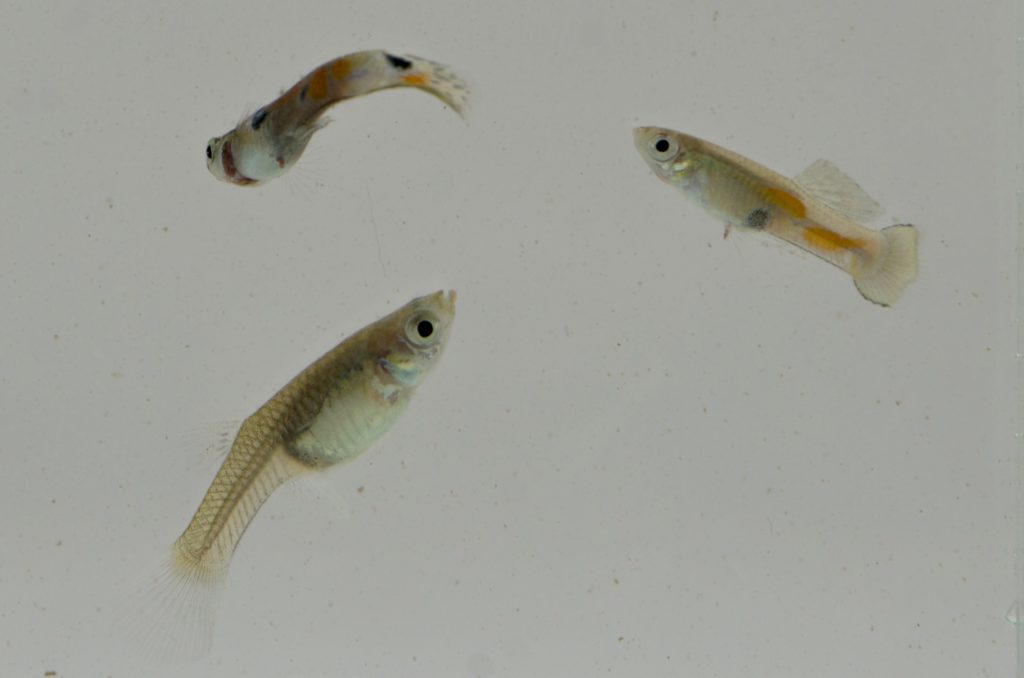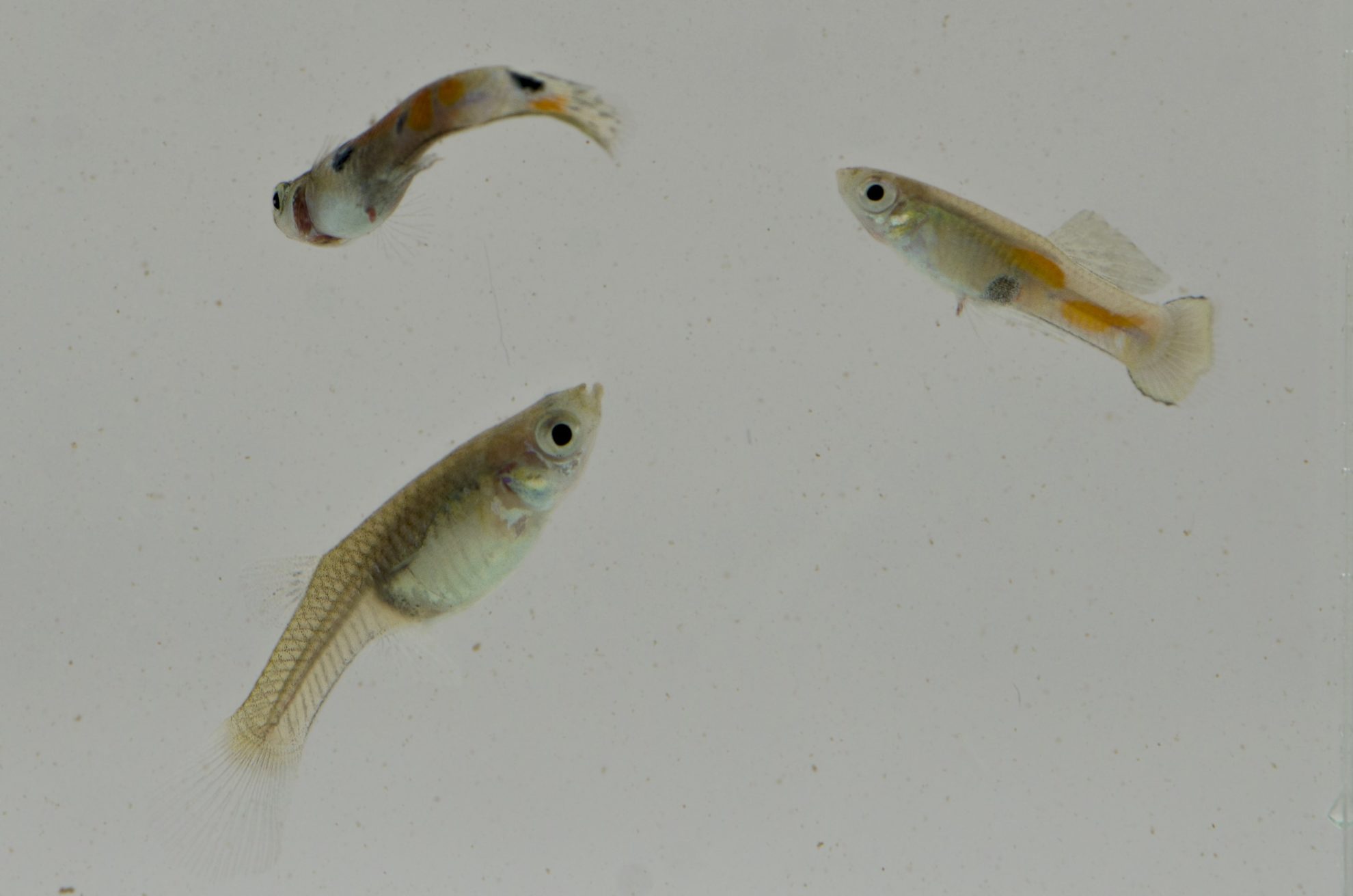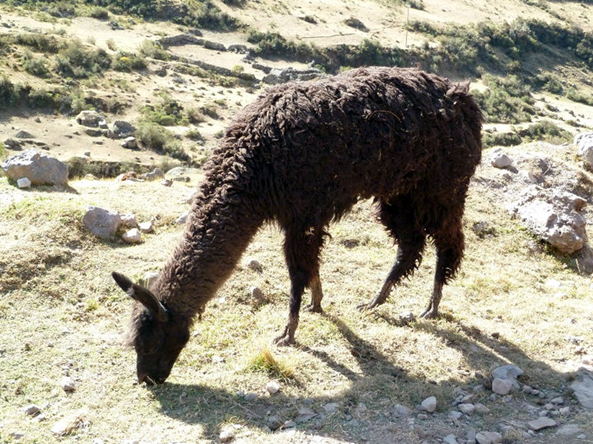Reindeer have their antlers, peacocks their feathers, and Trinidadian guppies their colored spots (see image). All of these, and many other beautiful and bizarre traits in animals, can help an individual stand out from a crowd and impress a mate. Like ornaments on a Christmas tree, they can make an animal sparkle and shine—but are they mere baubles or more like billboards, advertising how great a mate their owner would make? In other words, what do sexual ornaments signal to potential mates?

One possibility is that animals with the largest, brightest, or shiniest ornaments have the fewest parasites. Thus, if the animals with the best ornaments had an advertising slogan, it might be: “Look at me! I’m so sexy, I’m parasite-free”. A couple of meta-analyses (scientific studies that combine data from multiple other studies) published in the 2000’s and earlier found just that—a negative correlation between the number of parasites a host had and the quality of their ornaments. However, those studies left unanswered questions: what are the benefits of mating with highly ornamented mates and what kind of ornaments are best at advertising having fewer parasites?
My co-authors and I decided to answer these questions by conducting a meta-analysis ourselves, taking advantage of the hundreds of additional studies conducted on this question since the previous meta-analyses. We combed through these studies, gathering the data from each, and then put it all together to see if we could find a negative correlation between a host’s number of parasites and their ornament quality. We also grabbed information about the host and parasite, including whether the parasite infected the inside of the host (like an intestinal worm) or the outside (like a tick). By recording these factors, we could then test if any of them affected our results—for example, is there a stronger relationship between ornament quality and a host’s number of parasites if the parasites are found on the outside instead of the inside? We ended up with more than 400 data points, much more than the previous meta-analyses.
Like the previous meta-analyses, we found that—on average—there was a weak but negative correlation between the number of parasites hosts had and their ornament quality. That means, in general, a mate with better, brighter, or fancier sexual ornaments was likely to have fewer parasites than one with worse, duller, or plainer ones. Importantly, our study also found that only two of the additional factors we collected affected our results: whether a parasite could transmit during sex or if the ornament could dynamically change.
We found that only those parasites that could transmit between hosts during sex had a negative link with ornament quality. Parasites can transmit during sex not only if they’re a sexually transmitted infection but also if they’re transmitted by close contact in general. By choosing mates with fewer parasites, then, animals might have benefited by avoiding getting infected. If parasites can’t transmit during sex—like if, for example, a parasite needs to infect a different host species before it again poses a risk to the first species—then choosing a parasite-free mate doesn’t carry that same benefit and thus might explain why their hosts’ ornaments didn’t advertise the number of parasites.
We also found that ornament dynamism—or how fast an ornament could change in quality—mattered. If an ornament couldn’t change quality during a breeding season—like the size of a reindeer’s antlers—we called it static. Meanwhile, if it could change quality during a breeding season—like the shininess of a bird’s feathers—we considered it dynamic. Importantly, we considered behavior to be a kind of dynamic ornament—how often a rooster courts a hen can change must faster than the size of his comb, but more frequent displays are a higher quality “ornament” in the same way as larger comb. We found that only dynamic ornaments were negatively correlated with the number of parasites an animal had. This makes sense, as static ornaments are grown in the past, and so may not be a good indicator of the current number of parasites. Thus, we found more dynamic ornaments were the best kind of traits to advertise having fewer parasites. This held true even when parasites couldn’t transmit during sex, suggesting that animals choosing a more ornamented mate under those conditions could have benefited by having offspring that inherit the ornamented mate’s ability to fight off parasites.
Altogether, our work suggests that parasites do play an important role in how animals chose their mates, and that ornament quality conveys information about parasite infection if ornaments are dynamic or parasites can transmit during sex. We hope our study inspires further research into how animals choosing their mates affects parasites and vice versa.


